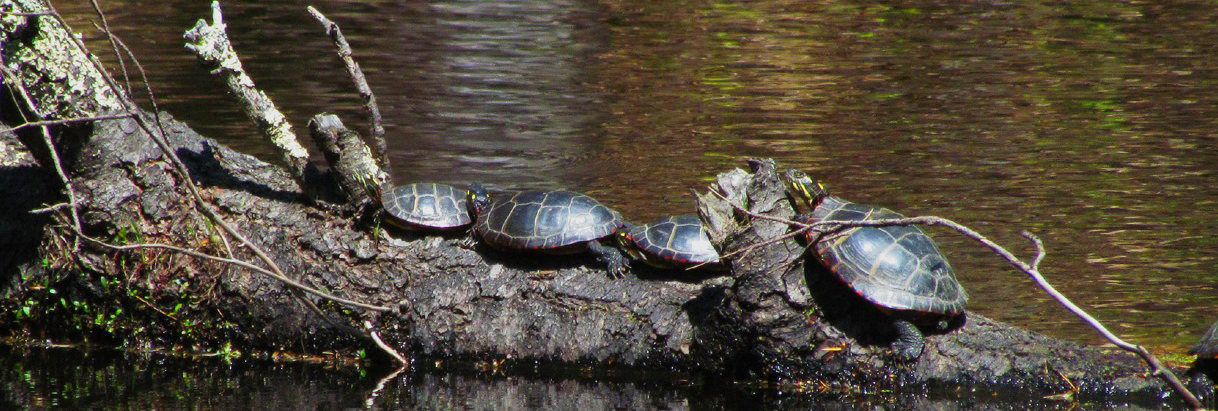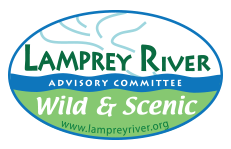LRAC Community Grant Program
Program Description
The Community Grants Program, formerly the Small Grants Program, is intended to generate creative projects that provide a new approach to needs identified in the 2025 Lamprey River Management Plan. Grants will be for one-time projects that can be completed within the specified time frame and are not to be used for on-going projects or extensions of previous projects. The products of the grants must be accessible to and usable by individuals and groups who have an interest or stake in the Lamprey River watershed. Priority will be given to projects that focus on the Lamprey River in Epping, Lee, Durham, and/or Newmarket (the four towns designated as part of the National Wild and Scenic Rivers System), but proposals for projects in the other Lamprey River towns will be considered. Applications should be emailed to info@LampreyRiver.org or mailed to LRAC, c/o 71 Allen Farm Road, Northwood, NH 03261. Applicants are encouraged to discuss potential projects prior to submitting an application. Applications are generally accepted on an on-going basis. Please contact us for details.
The full program description can be accessed here.
A sample grant application form is available here.
Funding
Each grant generally shall not exceed $7500. The grant money is to be used for expenses directly associated with the project, with not more than 10% going to overhead. Grantees are expected to provide full disclosure as to how funds were spent and provide receipts as appropriate. Grantees are required to complete an IRS Form W-9 for tax and accounting purposes. (This form requests the tax identification number of the organization or the social security number for an individual.) All projects and associated publicity/outreach will acknowledge LRAC funding.
Projects
Projects must include the following:
- Support the mission of the LRAC to implement the 2025 Lamprey River Management Plan.
- Educate people about the river and its watershed.
- Engage partnerships with other environmental or historic groups if possible.
- Be of value beyond the date of completion.
- Acknowledge LRAC as the sponsor for all projects.
Each proposal must contain the following information:
- project title
- name, address, telephone number(s), e-mail address
- affiliation (if appropriate)
- objectives
- intended audience
- location of project
- project procedures
- budget (maximum 10% administrative overhead)
- task timeline
- specific 2025 Lamprey River Management Plan portions addressed by the proposal
- evaluation
- how the project will protect the river, its tributaries, and the watershed
- who will benefit from the project
- how the project will assist outreach and education for the LRAC
A sample grant application form is available here.
Reports and Products:
Open communication between the grantee and the Grants Working Group is encouraged. At least one written interim report updating the working group on progress is required four months after comencement of work. An interim presentation to the working group is also encouraged. Final reports and products are generally due six months after the grant award is made.
Final reports must contain the following:
- a brief description of the project, including title, purpose, audience, procedures, & evaluation procedure
- a list of valuable accomplishments & who benefited
- funds budgeted and how they were spent
- two copies of any products (reports, press releases, photos)
Grantees are usually invited to speak to LRAC when their project is completed.
Payment to Grantees
Due to the short-term nature of the Community Grants projects, one half of the total grant will be paid to the grantee upon notification of grant approval by the committee. The remaining half will be paid to the grantee upon completion of the project and receipt of the final report and any associated products. Under certain extenuating circumstances, the initial payment may exceed 50% as determined by Community Grants working group members.
Ideas for Possible Projects
- Identify stormwater and other run-off problems in one town and develop a program to engage the public in a preventive program.
- Collaborate with other Lamprey River groups and LRAC to plan and coordinate a watershed-wide river celebration.
- Create a program to engage citizens to identify invasive aqautic weeds in the river.
- Create a video about local wildlife or habitats and their importance to the river and surrounding landscape.
- Develop a pilot program to reduce the over-use of salt in winter on driveways and parking lots.
- Identify a parking lot close to the river; work with the owner and the Stormwater Center at UNH to create a low-cost retrofit plan that will reduce run-off.
- Engage a riverside neighborhood to “adopt the river” and work toward reducing erosion, run-off, and litter while improving the shoreline by planting shrubs and other vegetation.
Previous Projects
2009
- development of database and soil conservation outreach to Lamprey River landowners in Strafford County
- Wiswall's Mill: A Short History DVD
- The Lamprey River Tour: Mary Blair Park DVD
- documentation and mapping of historic mills along the Lamprey River
2010
- nitrogen pollution outreach in Durham and making rain barrels
- creation of lending library of invasive weed removal tools housed at Great Bay Discovery Center
- development of the Deerfield Community Trail network and map
2011
- pilot project for on-site septic system review and outreach
- revision and update of The Lamprey River Curriculum
-
fly-over filming and production of Connecting Lives on the Lamprey River DVD
2012
- enhanced database of dams along the lower Lamprey River with focus on improving fish passage
- creation of natural playground plan for Mary Blair Park
- creation of historic and nature trail system plan at Mary Blair Park
2013
- Lamprey River guide and tour of trees in the NH Big Tree Program
- creation of a DVD to document 30 years of volunteer efforts to protect the Lamprey River
- public art project focusing on water issues along the Lamprey
2014
- bioinventory and stewardship plan for the Rothwell Reserve in Lee
2015
- eradication of invasive weeds at Rothwell Reserve in Lee
- documentation of process and findings for limited large woody material relocation
- watershed-wide stream clean up event
- identifying stormwater improvement demonstration sites and potential barriers to implementation
2016
- neighborhood rain garden project
- First Annual Lamprey River Splash and Dash in Newmarket
2018
- Hammock to 3K kayak race preparation
- Tilton Conservation Area signage and trail improvements
- conservation mapping and planning in the town of Barrington
2019
- Raymond wetlands inventory and priorities
- Thompson Forest kiosk sign
2020
- Little River Park trail improvements
- nutrient budget
- Pawtuckaway Lake variable milfoil pilot project
2021
- bacterial tracking
- replacement of sensors at Wiswall Falls, investigating streaming of data to public
- phase 1 erosion modeling: Japanese knotweed areas versus natural
2022
- signage improvements at Heron Point, Newmarket
- upgrade of instream flow stations and Crowd-Hydrology Program involvement
2023
-
improvements and new signage at Sliding Rock Park, Newmarket
- Wadleigh Falls history kiosk
- Willey House Park and community art engagement
- Old Lee Trail improvements
- Lee Public Canoe Access invasive weed removal
- Doe Farm Forest Management Plan update

